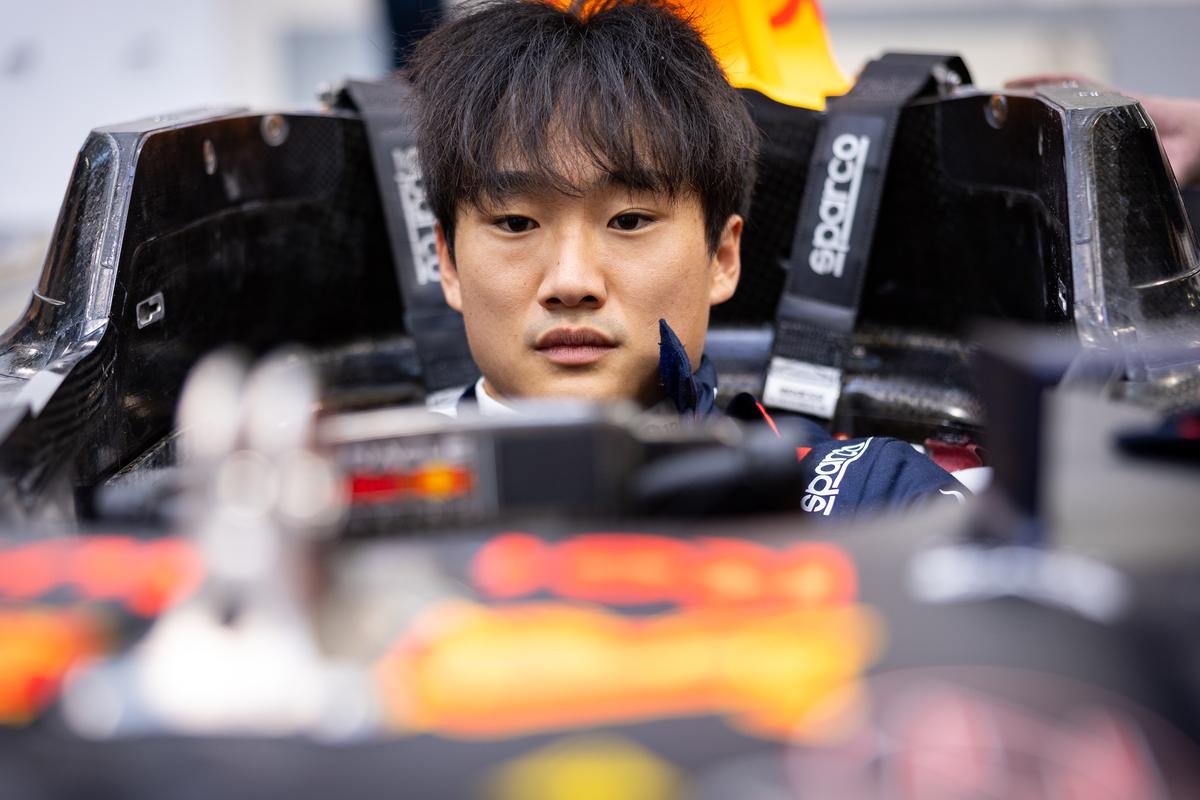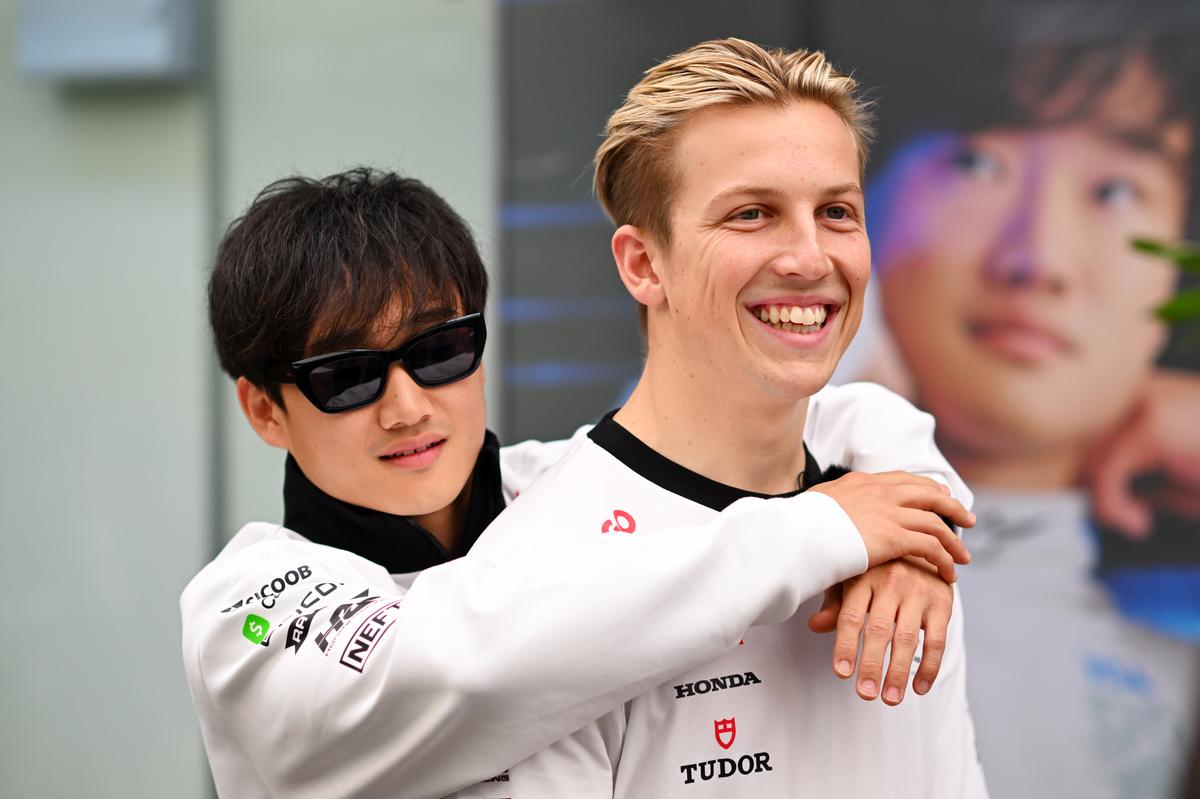Professional sport is often an ideal testing ground for the ‘survival of the fittest’ theory. Conventional wisdom across disciplines is that athletes are only as good as their last result. You can’t survive at the elite level with extended periods of underperformance.
In Formula One, that theory was taken to the extreme when Red Bull unceremoniously dropped its second driver, Liam Lawson, after just two races, a move that sent shockwaves up and down the paddock.
Miserable outing
The New Zealander had a miserable outing in the first two events of the 2025 season, starting last and failing to score points while Max Verstappen finished third and fourth in the other car.
Red Bull has now chosen Yuki Tsunoda to replace Lawson, starting from this weekend’s Japanese Grand Prix at Suzuka. The Japanese driver has represented the energy drink giant’s sister outfit, AlphaTauri/Racing Bulls, for the last four years.
Tsunoda was overlooked when Red Bull promoted Lawson, who only had 11 races under his belt, after sacking Sergio Perez in 2024. Perez had signed a two-year contract just months before his exit, a sequence of effects that reflected the bosses’ muddled thinking.
Tsunoda’s ascension to a top drive has not come easy and can be viewed as just reward for his hard work. At the same time, it also presents an interesting case study for how talent is evaluated; until recently, Red Bull felt Tsunoda was not cut out for its main squad.
Most modern-day sports are structured, with dedicated pathways for athletes to progress through the ranks. Athletes typically graduate to the highest level based on excellent junior performances. At the top, there are a few ways in which career trajectories can change.
The exceptional ones stand out while the no-hopers fall off the radar quickly. But most sportspersons range between these extremes. They are capable of reaching the highest level, but need time to discover if they belong. How quickly they diagnose and fix their shortcomings determines how their careers play out. Tsunoda is a classic example of this tier of athletes.

Maximising his chances: Over the last three years, Tsunoda has worked methodically on all aspects of his driving, from providing technical feedback to weeding out unforced errors to putting a race weekend together. | Photo credit: Getty Images
He aced the junior categories, finishing third in his rookie F2 campaign to earn a promotion to AlphaTauri for 2021. A points-scoring finish on debut in Bahrain impressed many. But over the rest of the year, a series of mistakes, a poor work ethic, and an inability to handle pressure saw him trounced by teammate Pierre Gasly. His constant swearing on the radio betrayed a lack of maturity, perhaps even a deficit in his capacity to handle the information given to him.
Tsunoda’s fitness levels were so abysmal that he later joked that his then-65-year-old boss Franz Tost was probably in better physical shape. Midway through his maiden season, he moved from the UK to Italy, where the team was based. Tost ensured his driver improved his fitness and worked alongside the engineers at the factory to prepare for the races.
Consistent progress
Over the last three years, Tsunoda has methodically addressed his flaws, from providing technical feedback to weeding out unforced errors to putting a race weekend together. Since 2023, the diminutive 24-year-old has become the de facto team leader at Racing Bulls. He has had three teammates — Nyck de Vries, Daniel Ricciardo, and Lawson — and has comprehensively beaten them all, showing his remarkable progress.
Despite his results and an impressive test for Red Bull in the post-season running at Abu Dhabi in 2024, he did not secure the seat next to Verstappen for 2025.
One of the reasons Red Bull boss Christian Horner cited was Lawson’s superior mental strength, considering the Kiwi was a lot closer to Tsunoda in races despite his relative inexperience.
Another reason could be that in the cutthroat world of F1, drivers need to show something special, even if they have rough edges. It can be the ability to be quick around street circuits or surefooted in wet or mixed conditions — something that stands out distinctly even if their CV is not stellar.
Still, after a long wait, there is now a volte-face on Tsunoda’s ability, and he has been thrown in at the deep end. The youngster has a great chance to prove his credentials and secure a longer-term future. Right now, the bar is set so low that if he can qualify in the top-10 and finish in the points, Horner & Co. will gladly take it.
At the same time, it is an enormous indictment of Red Bull’s driver management that it has been unable to find the right driver for one of the most coveted seats in F1 despite controlling four seats on the grid and having an extensive junior driver programme.

Musical chairs: The Tsunoda-Lawson situation is an indictment of Red Bull’s driver management. Despite controlling four spots on the grid, it hasn’t adequately filled one of the most coveted seats in F1. | Photo credit: Getty Images
Since 2019, Verstappen has had four colleagues: Gasly (who had only 12 races), Alexander Albon (one-and-a-half seasons), Perez (four years), and Lawson. Barring Perez, the others were promoted too soon and found it hard to get close to the Dutchman’s pace.
One of the reasons for this is the nature of the Red Bull itself. The reigning champion prefers a car with a sharp front end, which responds well when he first applies steering lock, even if the car’s rear is loose and moving. He overcomes the rear instability through his innate talent.
Unfortunately, none of the drivers on the other side of the garage has been able to adapt to that trait. Since 2024, the car’s balance has become so tricky that even Verstappen is not happy, although he still manages to eke out spectacular results through sheer ability.
A conundrum to solve
The Milton Keynes-based outfit is now faced with a huge conundrum. The team’s refusal to heed its drivers’ warnings has made it a one-trick pony capable of fighting for decent results only in the hands of a once-in-a-generation talent.
It now has to decide whether to dial down the machinery’s tricky characteristics, even at the cost of lap-time, or continue down the current path, hoping their latest recruit somehow manages to be the perfect rear-gunner for the reigning champion. Even if the best-case scenario does materialise, it will raise questions of why Tsunoda wasn’t picked in the first place and why Lawson has been made a sacrificial lamb.
But the bigger question is: What happens if Tsunoda struggles? Where does that leave the six-time constructors’ champion? Considering Tsunoda is walking into a challenging environment without any preparation, like a pre-season test, will he be given a long rope?
More importantly, new regulations will be in place in 2026, and there is no guarantee that Verstappen will stay if he doesn’t believe he has the vehicle to fight for titles. If Red Bull’s lodestar leaves and there is uncertainty over the other seat, the outfit could quickly go from a top-three unit to a midfield straggler.
Published – April 04, 2025 11:03 pm IST

